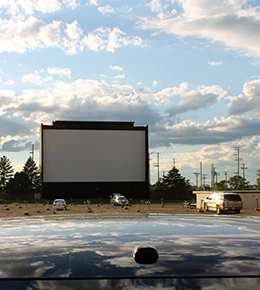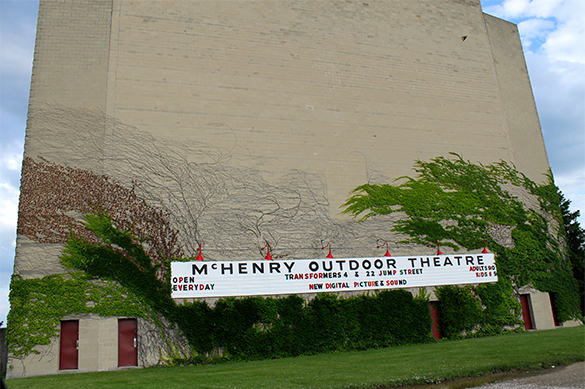 On a balmy evening in mid-July, the sun is just beginning to set over the drive-in movie theater.
On a balmy evening in mid-July, the sun is just beginning to set over the drive-in movie theater.
Cars enter the gravel lot and pull up close to the screen. The smell of popcorn from the concession stand wafts through the air along with the strains of Frankie Valli & the Four Seasons’ “Sherry.” It seems like a picture-perfect evening in the 1950s. In fact, it’s 2014.
A brief history of the drive-in theater
The first ever drive-in theater opened in Camden, New Jersey in 1933, but drive-ins did not truly take off until the 1950s when the American automobile craze was in full swing. Theaters installed playgrounds, picnic facilities and even baby bottle-warming stations for new mothers in order to attract families to the movies.
In the 1970s, the number of drive-ins began to plummet for a number of reasons, from the rise of cable television to the price of land. Still, some theaters managed to survive. There are three still operating within driving distance of Chicago: the McHenry Outdoor Theater in McHenry, Ill., the Cascade Drive-In in West Chicago, Ill. and the Keno Drive-In Movie Theatre in Pleasant Prairie, Wis.
A night at the drive-in
Eager to catch a double feature at the drive-in? Here’s what to expect from a night at the McHenry Outdoor Theater.
Where: 1510 Chapel Hill Road in McHenry. Look for the white sign at the intersection of Lincoln and Chapel Hill roads.
Hours: The gates open every day of the summer at 6:30 p.m. The first film will begin around 9:30 p.m. Arrive early as the 778-car lot fills up fast, especially on weekends and holidays.
Cost: At $10 for adults and $5 for kids for a double feature, tickets are a steal.
What to bring:
- If you prefer to sit outside your car when watching the films, bring folding chairs and a portable radio (the theater also rents them for $5 apiece)
- Bug spray
- A coat and blankets if the evening is chilly
- Money for the concession stand—although outside food is allowed, the concession stand is a major source of the theater’s revenue
How does it work? Before you enter the lot, an attendant will tell you to park next to either a red or a silver pole, depending on the size of your car. This is to ensure that everyone will be able to see the screen, since the parking lot is not graded.
When the movie starts, tune your car radio to 89.9 FM to hear the audio (or listen on a portable radio while sitting outside your car). Be prepared to sit for a while; with two feature films each night, you may be at the theater well into the wee hours of the morning.
Don’t miss: If you arrive early enough, you can park next to a pole with original speakers. Due to their age, few of these speakers are functional; nevertheless, here’s your chance to hold a piece of history.
You’ll definitely want to pay a visit to the concession stand, which serves up old theater memorabilia in addition to hot dogs and burgers. See if you can spot the ancient film projector that the theater used before switching to digital projection, a vintage jukebox and an old popcorn-butter dispenser.
What’s playing? The lineup of films typically changes every couple of weeks. To see what’s playing, visit the theater’s website.



